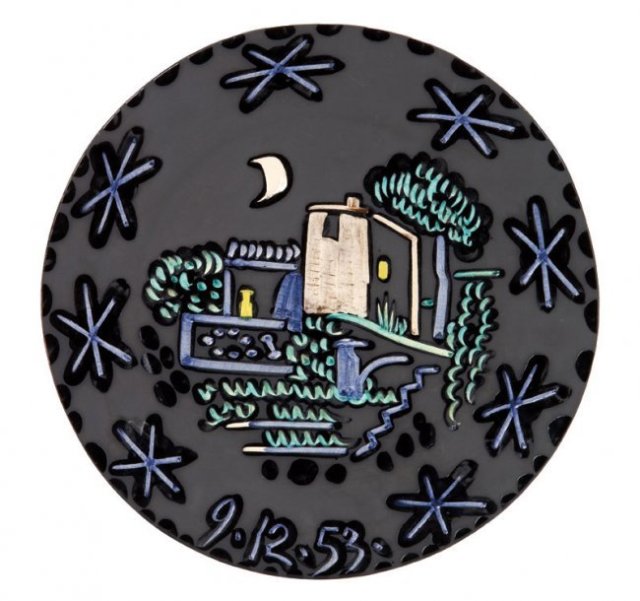His style developed from the Blue Period (1901-04) to the Rose Period (1905) to the pivotal work Les Demoiselles d'Avignon (1907), and the subsequent evolution of Cubism [more] from an Analytic phase (ca. 1908-11), through its Synthetic phase (beginning in 1912-13). Picasso's collaboration on ballet and theatrical productions began in 1916. Soon thereafter, his work was characterized by neoclassicism and a renewed interest in drawing and figural representation. In the 1920s, the artist and his wife, Olga (whom he had married in 1918), continued to live in Paris, to travel frequently, and to spend their summers at the beach. From 1925 into the 1930s, Picasso was involved to a certain degree with the Surrealists, and from the fall of 1931 he was especially interested in making sculpture. In 1932, with large exhibitions at the Galeries Georges Petit, Paris, and the Kunsthaus Zürich, and the publication of the first volume of Christian Zervos's catalogue raisonné, Picasso's fame increased markedly.
By 1936, the Spanish Civil War had profoundly affected Picasso, the expression of which culminated in his painting Guernica (1937, Museo Nacional Centro de Arte Reina Sofia, Madrid). Picasso's association with the Communist Party began in 1944. From the late 1940s, he lived in the South of France. Among the enormous number of Picasso exhibitions that were held during the artist's lifetime, those at the Museum of Modern Art, New York, in 1939 and the Musée des Arts Décoratifs, Paris, in 1955 were most significant. In 1961, the artist married Jacqueline Roque, and they moved to Mougins. There Picasso continued his prolific work in painting, drawing, prints, ceramics, and sculpture until his death April 8, 1973.
